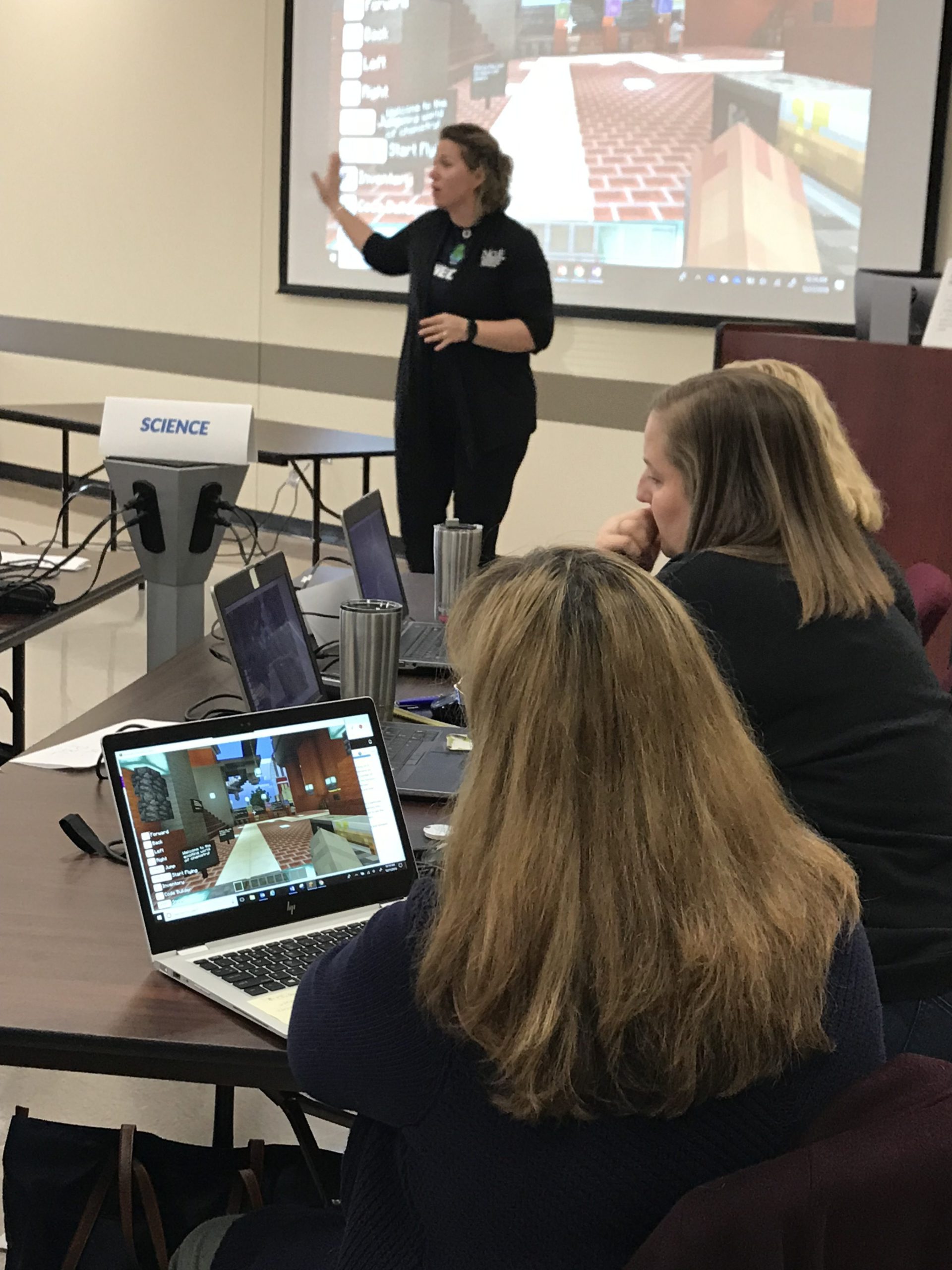Students at Cherokee County School District use the digital resources found in the game Minecraft: Education Edition to build various structures that complement lessons learned in the classroom. Minecraft lessons include students making models that depict the five stages of the water cycle and building their interpretations of what cities across the British Empire looked like. Meanwhile, a high school teacher’s Minecraft curriculum teaches about supply and demand by having higher schoolers create and sell items to their classmates in other “cities” using Minecraft dollars.
“The teacher throws in scenarios throughout the lesson, saying their raw materials have run out or that they have flooded the market, which requires students to adapt,” says Shannon Carroll, supervisor of instructional technology at the Georgia school district.
In March, students made up 10,000 of the total 45,000 worldwide users who were actively using Minecraft: Education Edition, and ranked second in Georgia, eighth in the nation and 20th worldwide.
“We believe that game-based learning programming like Minecraft Education is one of the best ways in which to engage students and have them own their learning,” says Superintendent Brian Hightower. “CCSD is ‘all in’ on the role of technology for student learning in our schools.”
Learning how to use Minecraft Education
The initiative began in 2017-18 when Cherokee County was one of 20 districts chosen by Microsoft to pilot Minecraft in the classroom.
 During the roll out, 60 teachers voluntarily participated in separate two-day training sessions. “Many of our teachers weren’t gamers, so we got them comfortable with the program and showed them how to create lessons based on state standards on the first day,” says Carroll.
During the roll out, 60 teachers voluntarily participated in separate two-day training sessions. “Many of our teachers weren’t gamers, so we got them comfortable with the program and showed them how to create lessons based on state standards on the first day,” says Carroll.
For the second day of training, Microsoft provided funding for six trainers from the Northwest Council for Computer Education to work one-on-one with teachers and show them how to use Minecraft Education. “The NCCE trainers had teachers share past lessons and came up with ways to improve them with Minecraft,” says Carroll. Teachers then presented their ideas to students with trainers offering guidance.
Now, teachers who want to implement Minecraft in the classroom must go through a similar two-day PD program with district instructional technology specialists who are certified to teach the course.
Related: 4 districts that incorporate innovative ed tech in PD and in the classroom
Related: 3 districts that developed innovative programs targeting at-risk students
Related: 4 districts that created innovative CTE programs and pathways
“This is important not just to learn how to use Minecraft Education, but to understand our philosophy,” says Bobby Blount, chief information officer. “This is something you don’t just play in class. You are using it to enhance your lesson.”
Since 2018-19, more than 142 teachers from 34 schools have participated in 45,080 minutes of professional development. Additionally, seven teachers have passed Minecraft’s official Global Minecraft Mentor program online.
Getting stakeholders on board
The district communicated with parents and members of the community that students would not just be playing games in the classroom. “We went to greath lengths to make sure our stakeholders knew that Microsoft had turned up the volume on the product by offering a standards-based education resource,” says Blount. “Even though it isn’t playtime, we want learning to be fun.”
Cherokee County School District
District size:
42,441
Superintendent:
Brian Hightower
Initiative launched:
2017-18
Using Minecraft: Education Edition
During school closures, teachers still assign Minecraft lessons, and students who want to collaborate need to share their virtual worlds with each other since everyone uses separate networks at home.
Before COVID-19, a commonly used Minecraft curriculum had students lead class by working together in groups to build various structures. “In a classroom setting, teachers can steer group discussions and observe how students work together,” says Blount. “They can say, ‘This is not how you strategize a problem. Take a look at what this group is doing and emulate their behavior and strategies.’”
 While students can build structures manually by having their digital characters pick up virtual blocks, Minecraft: Education Edition features coding components that teachers encourage students to use. “We have some third-graders who are using coding to build a wall, for example, that would be in an AP computer science course,” says Carroll. “We have had students going from being shy and disengaged to leaders in the classroom.”
While students can build structures manually by having their digital characters pick up virtual blocks, Minecraft: Education Edition features coding components that teachers encourage students to use. “We have some third-graders who are using coding to build a wall, for example, that would be in an AP computer science course,” says Carroll. “We have had students going from being shy and disengaged to leaders in the classroom.”
To learn more about Districts of Distinction, click here.







